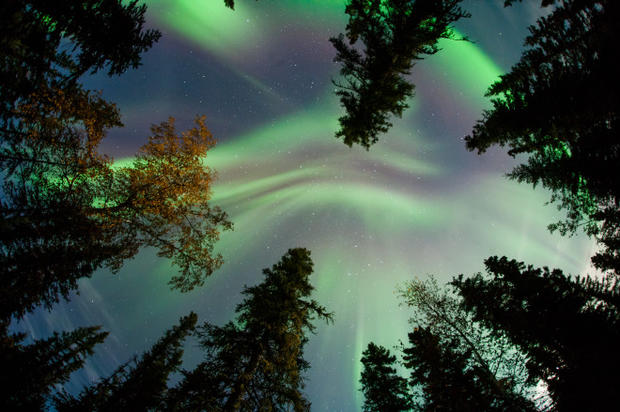Large solar storm hits Earth
Earlier this week, the sun spat out two long, powerful streams of magnetically charged particles.
The first wave hit the Earth the night of Sept. 11 and caused a moderate "G2" geomagnetic storm, yielding beautiful aurora light shows in Canada, the northern U.S. and Europe. The second, larger stream began hitting the Earth "just before noon EDT" today, according to C. Alex Young, Associate Director for Science in NASA's Heliophysics Division.
Last night's light show is nothing compared to the light show scientists are predicting for Friday and Saturday. The space weather forecasting service run by NOAA and the U.S. Air Force predicts that: "The geomagnetic field is expected to be at unsettled to major storm levels on day one (12 Sep), active to severe storm levels on day two (13 Sep) and unsettled to minor storm levels on day three (14 Sep)."
Both moderate G2 and major G3 storms cause auroras, though a more severe electromagnetic disturbance makes the lights brighter and spread over more of the Earth's surface. In an email today, Young noted: "the storm level is predicted to increase to G3 level into tomorrow. If the storm reaches G3, aurora could be seen down to areas like Illinois and mid-Atlantic states. G2 is more like Idaho and New York State."
To see an aurora, find a dark, cloudless area within the "aurora oval" and get away from light pollution. You may see a sky flashing green, blue-violet, or perhaps a rarer red hue. Young told CBS News in a phone call that the light show could last as little as 45 minutes or could go on for hours.
The Earth's magnetic storms began on Monday in an active sunspot called AR2158. That spot spat out a moderate solar flare, followed by a more extreme one Wednesday.
In a press conference, Thomas Berger, director of NOAA's Space Weather Prediction Center, said that "sunspot AR2158 is about the size of between 10 and 20 Earths, but appears to be in the process of breaking up." The huge solar flare may have been "its swan song as it breaks down."
The particles are not harmful to people on the ground. If the geomagnetic storm is severe, airplanes are rerouted to avoid magnetic disturbances in the polar regions. Electrical and satellite communications systems could be effected, though operators around the world take special precautions to minimize any damage. NOAA expects no major disruptions, though they are monitoring the situation.

